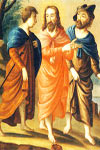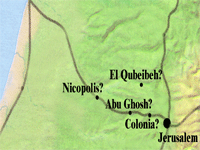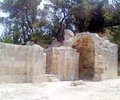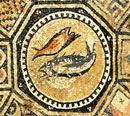The Emmaus Encounter – A fiction inspired by faith
“And their words seemed to them as idle tales, and they believed them not.” – Luke 24.11.
Of the dozen or so post-death appearances claimed for Jesus Christ, the “most detailed” (a whole 20 verses) is the one reported solely by Luke, “on the road to Emmaus.” Alarmingly, from the perspective of historical proof, the two primary witnesses for the “risen Christ” in this incident are unknown – one named but nowhere else mentioned, the other not even named. Adding further to the suspicion that what we are dealing with is not history but pious fabrication is a curious uncertainty surrounding the supposed location. Faith, we are told, rests upon the historical testimony of those who “saw and bore witness”. But what if that testimony is itself merely a fiction inspired by faith?
Of such fluff is the central drama, the cardinal belief of Christianity made.
Rise and Shine – "The best attested event in history"
Why was it important that the risen Christ be unrecognised? The motif appears elsewhere (as when Mary Magdalen thinks he’s the “gardener” in John). The reason is liturgical. “JC is ever-present at the sacraments. Be warned! You may not recognize him.”
A familiar source
Luke’s “authentic detail” of naming the village to which the two walked raises an obvious question, Where was Emmaus? Although no fewer than nine sites have been proposed for the village, nothing in archaeology or literature confirms any particular location. Only one other ancient writer besides Luke refers to the “village” of Emmaus – Josephus (surprise, surprise!).
Josephus names both the town and its distance – just as we read in Luke! But Josephus overestimated the distance – 30 stadia (or 3.7 miles) would be nearer the mark – and Luke copied Josephus, complete with the error! The Lucan “Emmaus” is a literary phantom.
Reality check
Unknown witness
A mobile legend
Off to tell the others
Last goodbyes
Theology creates its own "evidence"
PS: Source?
Sources:
- Jerome Murphy-O’Connor, The Holy Land (OUP, 1986)
- Robert Price, Jeffery Lowder, The Empty Tomb (Prometheus, 2005)
- E. Hoskyns,, N. Davey, The Riddle of the New Testament (Faber, 1947)
- Carsten Peter Thiede, The Emmaus Mystery (Continuum, 2005)
- Barbara Thiering, Jesus the Man (Doubleday,1992)
- John Dominic Crossan, The Historical Jesus (Clark, 1991)
- Gary Habermas, The Verdict of History (Monarch, 1990)
Related Articles:

A meeting with strangers?
Where is Emmaus?
Luke’s 60 furlongs is thus about seven and a half miles — but he does not say in which direction!


Nicopolis ("Emmaus")
Josephus on Emmaus

* "Cleopas" inspired by Buddhist scripture?
Was that 60 or 160 stadia?


That fishy story
Iamblichus Life of Pythagoras, 8.
